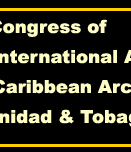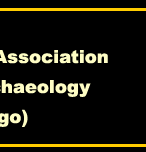






 |
 |
 |
||
 |
 |
|||
|
Between
July 20 and August 1 and August 17 and 21, 2003 archaeological surveys
and excavation were conducted at Marianne Estate in Blanchisseuse,
north Trinidad. The archaeological crew, headed by Dr. Basil Reid,
U.W.I. Archaeology Lecturer, was comprised of the following undergraduate
history students: Corrine Allahar, Fayola Clarke, Joel Gobin, Feroze
Khan, Diann Ragoonanan, Narissa Seegulam and Jasodra Ramnarine Singh
as well as Cecil Hodge, undergraduate student in the Department
of Surveying and Land Information. ALL ABOUT THE SALADOIDS
The Saladoids were the first pottery making peoples to have settled
in Trinidad and Tobago from 250 BC to AD 600. Named for Saladero
in Venezuela, where their pottery styles were first identified and
classified, the Saladoid peoples migrated from the Orinoco Delta
of north-east South America settling in areas near to the sea, rivers
and on hilltops. Occupied by extended families, their villages usually
consisted of huts centred around a central plaza. The Saladoids
practiced a mixed economy based on horticulture, fishing, shell
collecting and lapidary trade. As skilled artisans, the Saladoid
peoples were adept at making pottery, pottery adornos and stone
pendants. Human burials found in the central plazas of Saladoid
settlements such as Maisabel, Puerto Rico as well as the presence
of anthropomorphic (human) pottery adornos at Marianne Estate and
elsewhere in Trinidad clearly suggest that these Amerindians believed
in ancestral worship.
|
 |
|||
 |
 |
|||
I.A.C.A.
© Copyright. All Rights Reserved 2004
Website designed by Digital
Art Limited
& The University of The West Indies, St. Augustine